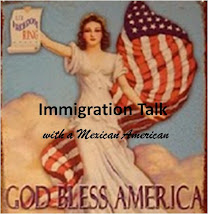Archbishop of Buenos Aires, Jorge Mario Bergoglio, was elected the 266th Pope of the Catholic Church. He selected the name Pope Francis after Saint Francis of Assissi because of his love for the Poor and Saint Francis Xavier because of his Jesuit studies.
Our new Pope was born in Buenos Aires on Dec. 17, 1936. He was one of five children. His parents immigrated from Southern Italy. Pope Francis is well educated, receiving Masters' degrees and obtained his license in philosophy. He taught literature and psychology as several colleges in Argentina. He studied to become a Jesuit priest and was ordained a priest in 1969. He was quickly promoted to rector of the seminary, then named Auxiliary Bishop, Bishop, and Archbishop. In 2001, Pope John Paul II, as his mentor, named him Cardinal and appointed him to several administrative positions in the Roman Curio. Pope Francis was known for his personal humility, conservatism and commitment to Social Justice for all people. He always maintained a very simple lifestyle, foregoing chauffeured driven limousines and cooking his own meals.
Pope Francis is the first Jesuit to be chosen Pope. He is also the first Latino Pope, first Pope to come from the Americas, and the first non-European Pope in 1200 years. Many are saying that Pope Francis was elected because 480 Million of the World's 1.2 Billion Catholics come from Latin America and has the largest rate of New Catholics.
Pope Francis is an advocate for the Poor. One of his famous quotes: "Extreme Poverty and unjust economic structures that cause great inequalities are violations of Human Rights.
Wednesday, March 13, 2013
Subscribe to:
Post Comments (Atom)









3 comments:
The New Pope is a Jesuit - The Jesuit Reductions or Missions of Indians were praised by such European Intellectuals as Montesquieu in his L'Esprit des Lois (1748), and even by Rousseau, no friend of the church.
The Jesuit Missions protected the Indians from Brutal Slavers and "modernized" them without destroying their culture. They had arms and raised militias of Indians to defend the reductions against raids. The bandeirantes followed the reductions into Spanish territory and in 1641 the Indian militia stopped them at Mbororé. The militias could number as many as 4,000 troops, and their cavalry was especially effective, wearing European-style uniforms and carrying bows and arrows as well as muskets.
Jesuits Sandoval and Saint Peter Claver protect Black Slaves in Cartagena Colombia
Claver's predecessor in his eventual lifelong mission, Father Alonso de Sandoval, S.J., was his mentor and inspiration. Sandoval devoted himself to serving the slaves for 40 years before Claver arrived to continue his work. Sandoval attempted to learn about their customs and languages; he was so successful that, when he returned to Seville, he wrote a book in 1627 about the nature, customs, rites and beliefs of the Africans. Sandoval found Claver an apt pupil. When he was solemnly professed in 1622, Claver signed his final profession document in Latin as:Petrus Claver, aethiopum semper servus (Peter Claver, servant of the Africans forever).
Ministry to the slaves
Convent of St. Peter Claver in Cartagena, Colombia, where Claver lived and ministered
Whereas Sandoval had visited the slaves where they worked, Claver preferred to head for the wharf as soon as a slave ship entered the port. Boarding the ship, he entered the filthy and diseased holds to treat and minister to their badly treated, terrified human cargo, who had survived a voyage of several months under horrible conditions. It was difficult to move around on the ships, because the slave traffickers filled them to capacity. The slaves were often told they were being taken to a land where they would be eaten. Claver wore a cloak, which he would lend to anyone in need. A legend arose that whoever wore the cloak received lifetime health and was cured of all disease. After the slaves were herded from the ship and penned in nearby yards to be scrutinized by crowds of buyers, Claver joined them with medicine, food, bread, brandy, lemons and tobacco. With the help of interpreters and pictures which he carried with him, he gave basic instructions and assured the slaves of their human dignity and God's saving love.
******************
When the people of the city heard of his death, they forced their way into his room, to see and pay their last respects. Such was the reputation of his holiness among the populace that they stripped away everything there to serve as a relic of a saint.[3]
The city magistrates, who had previously considered him a nuisance for his persistent advocacy on behalf of the slaves, ordered a public funeral and he was buried with pomp and ceremony. It was only after Claver's death that the vast scope of his ministry came to be realized; which was prodigious even before the astronomical number of people he baptized is added in.
He was canonized in 1888 by Pope Leo XIII, along with the holy Jesuit porter, Alphonsus Rodriguez. In 1896 Pope Leo also declared Claver the patron of missionary work among all African peoples.[4] His body is preserved and venerated in the church of the former Jesuit residence, now renamed in his honor.
******************************
I think he is Italian-Argentino. His parents come from Italy. Even though he was born Argetina, I would think he describes himself that way just as you who was born in the U.S. describes yourself as Mexican American. Do you agree?
No, Argentina does not use "Italian-Argentino" or "Mexicano-Argentino" Mostly European-born live or born in Argentina consider to be Latino and Argentino/a because they embraced Spanish-Speaking culture. United States obsessed with nationality and race. Europe and Latin America does not care with "Italiano-Argentino". Get it?
Post a Comment